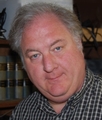(Subscribe to this discussion)
[Feature] For wireless microphone operators below 698 MHz, the FCC’s recent actions yield little to be concerned about and much to be thankful for. The frequencies above 698 MHz will be gone starting in February of 2009 (in an action announced years ago and unrelated to new devices) but the rules for the new TV Band Devices (TVBDs) are so stringent that it is unlikely any interference will be caused to wireless mic systems, even to those operating illegally. In addition to setting very high technical requirements for TVBDs, the FCC finds that it is in the public interest to provide spectrum space for wireless microphones even if they are operated without the required license.
Author:
Josephson, David
Affiliation:
Josephson Engineering, Inc.
JAES Volume 56 Issue 12 pp. 1132-1135; December 2008
Publication Date:
January 9, 2009
Click to purchase paper as a non-member or you can login as an AES member to see more options.
|
Henry Cohen |
Comment posted February 13, 2009 @ 20:41:51 UTC
(Comment permalink)
David Josephson's comprehensive article "How FCC 'White Space' Decision Will
(Respond to this comment)
|
 Author Response David Josephson |
Comment posted February 16, 2009 @ 17:34:10 UTC
(Comment permalink)
While there are a number of licenses in various segments of the 700 MHz band, I am not aware of any in actual day-to-day use except those that were authorized by waiver in special circumstances. There may be some, and of course starting next week who knows what we'll see. It is definitely time for a good scanning receiver or spectrum analyzer to be close at hand.
|
|
Brad Rowe |
Comment posted February 17, 2009 @ 17:03:04 UTC
(Comment permalink)
Great article. I really learned quite a bit, thanks. I do have a couple questions for you though, Mr. Josephson.
|
 Author Response David Josephson |
Comment posted February 18, 2009 @ 13:34:42 UTC
(Comment permalink)
Licensing is the bone of contention here. The high VHF and UHF wireless mic channels are in the broadcast segment of the spectrum, so the way the Communications Act reads, they can only be assigned to entities that have a broadcast license (AM, FM, television station). This rule has been eroded over the years — broadcast networks that didn't actually own stations were made eligible because wireless mics were used in the production of network programs that eventually were broadcast. Then, entities that produced programs for broadcasters, cable operators and motion picture producers were added. So, if you assert that you are producing a program for later broadcast on a cable network or a licensed station, you're eligible. It has nothing to do with size.
|
 Author Response David Josephson |
Comment posted February 18, 2009 @ 13:35:59 UTC
(Comment permalink)
The final rules (as final as they can be at this point, with so many things left undefined) were published in the Federal Register today, see http://frwebgate4.access.gpo.gov/cgi-bin/PDFgate.cgi?WAISdocID=903924271947+0+2+0&WAISaction=retrieve |
|
Henry Cohen |
Comment posted February 19, 2009 @ 17:04:52 UTC
(Comment permalink)
Just to clarify: The rules published in the Federal Register on February 17th was a revision to Part 15 only (the addition of a Subpart H) to regulate the manufacture and deployment of TVBDs. This revision has nothing to do with the operation of wireless mics, which is covered under Part 74, Subpart H, and which is currently under revision as well. |
![]() To be notified of new comments on this feature you can
subscribe to this RSS feed.
Forum users should login to see additional options.
To be notified of new comments on this feature you can
subscribe to this RSS feed.
Forum users should login to see additional options.
If you are not yet an AES member and have something important to say about this feature then we urge you to join the AES today and make your voice heard. You can join online today by clicking here.
